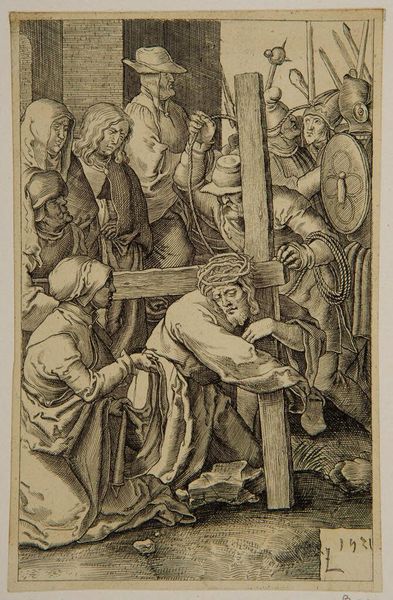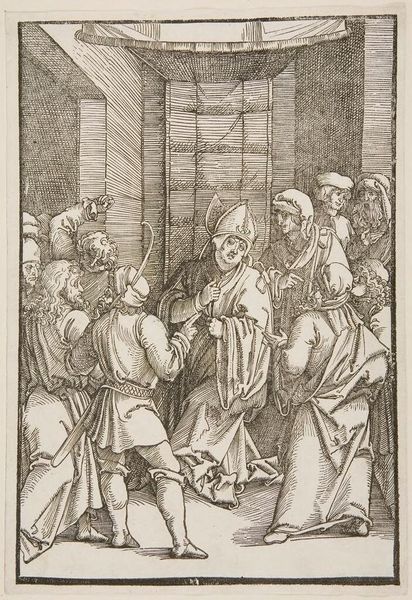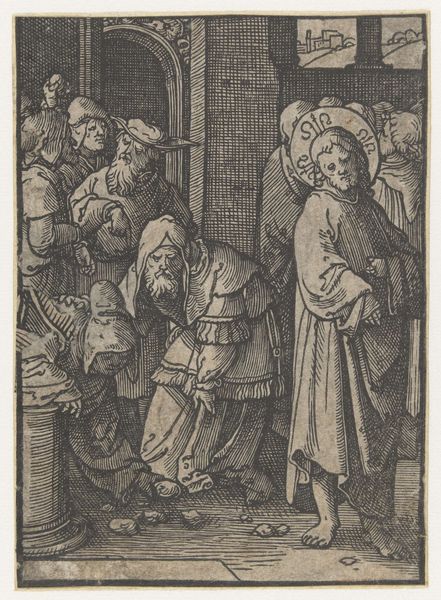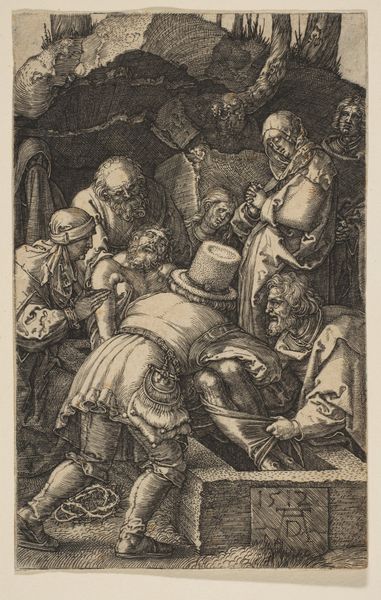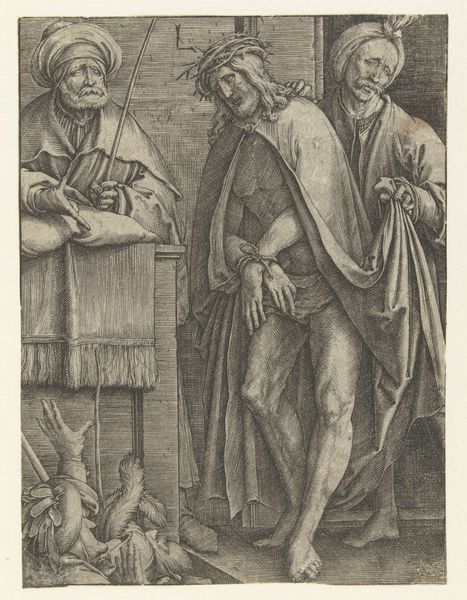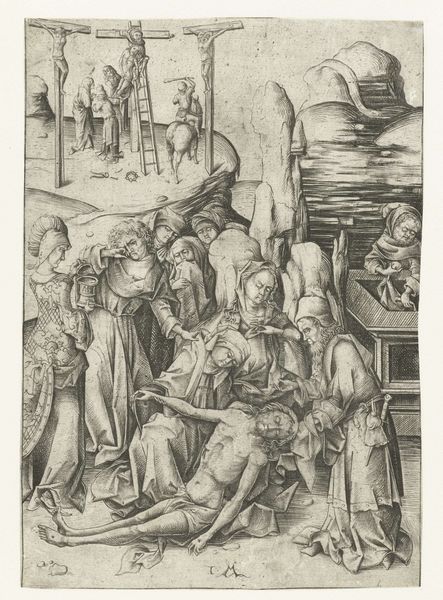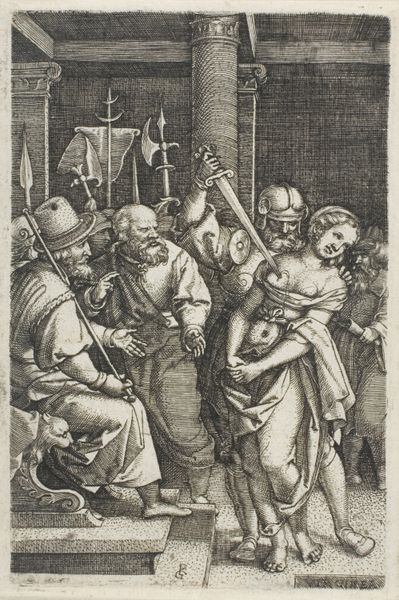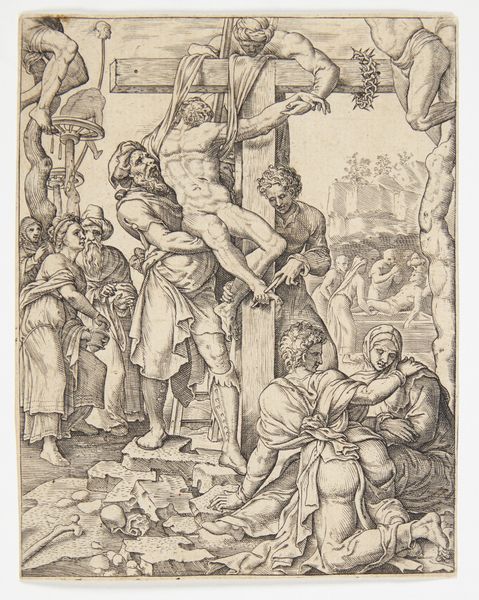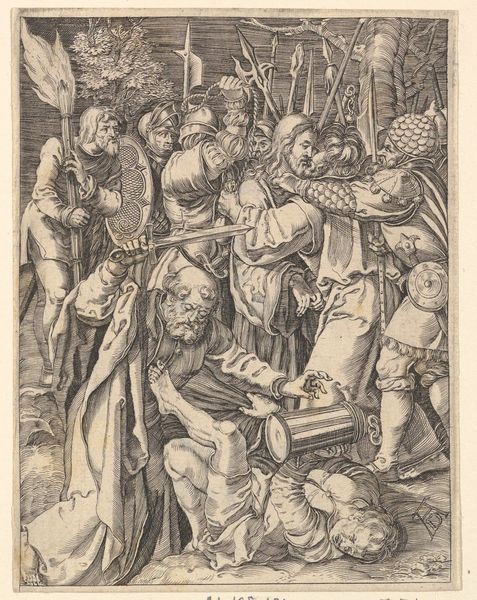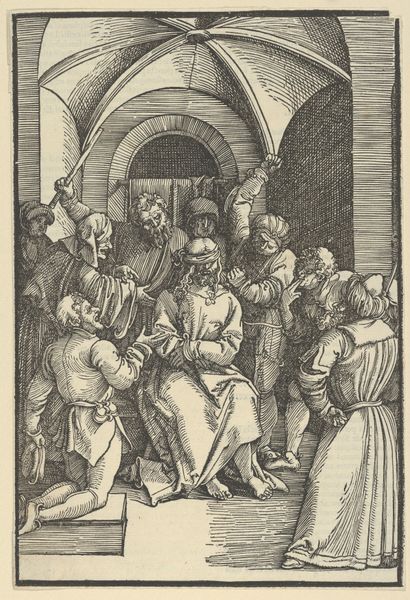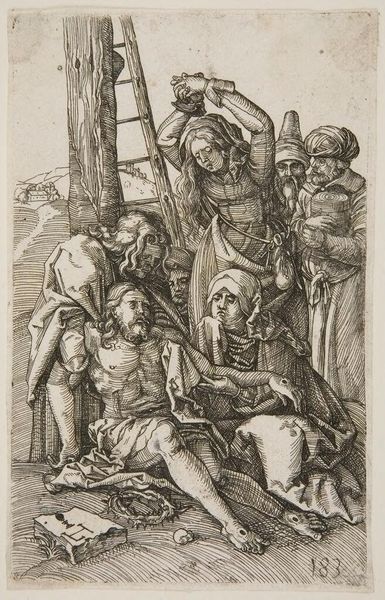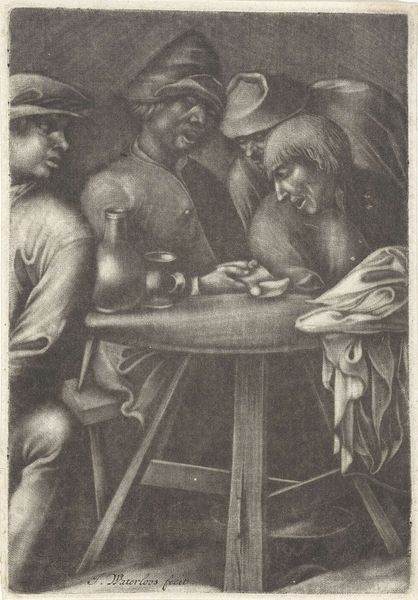
print, engraving
# print
#
figuration
#
history-painting
#
northern-renaissance
#
engraving
Dimensions: height 116 mm, width 75 mm
Copyright: Rijks Museum: Open Domain
Curator: Here we have Lucas van Leyden's "The Bearing of the Cross," an engraving from 1521, residing here at the Rijksmuseum. Editor: It's strikingly melancholic, isn't it? The weight of the scene, both physical and emotional, feels almost palpable. I see a diagonal thrust established by the cross, and the somber gray tone unites all of the figures together. Curator: Precisely. Van Leyden's use of line is remarkable; note the density and direction used to describe each object. The modulation of line thickness creates tonal variations, defining depth within the composition, while adding emotional weight, indeed. Editor: It’s fascinating how the figures closest to Christ are softer, with curved lines delineating their drapery. Conversely, the lines etching the soldiers feel harsher, reflecting, perhaps, a moral judgment. There is certainly an empathetic portrayal of suffering with those figures who reach to comfort Jesus, too. Curator: An astute observation. Van Leyden employs clear compositional strategy—the supporting figures cluster to the left while Roman authority dominates the right, boxing Christ between both, and in the immediate foreground is exposed land. There’s a geometric formalism at play even amid the emotionally charged subject matter. Editor: The cultural symbolism is quite heavy, isn’t it? The Bearing of the Cross carries so much religious and spiritual weight—a moment of divine sacrifice mixed with human cruelty, rendered in a style recalling Northern Renaissance somberness, particularly. And there are symbols of that human frailty laid bare in the rocks exposed at the bottom, an emotional weight for each viewer to process. Curator: I appreciate your bringing to attention this dichotomy—van Leyden manages to strike an accord, visually representing that fragile point where earthbound form collides with transcendental substance. This occurs by organizing masses and tonality on a level where only shape and value remain. Editor: Seeing it analyzed this way reveals its compositional ingenuity alongside its cultural weight. There's real insight to find through this technique here. Curator: I agree. Looking closely, one recognizes both the visual structure and how effectively Lucas van Leyden renders it to this artwork so emotionally engaging.
Comments
No comments
Be the first to comment and join the conversation on the ultimate creative platform.
